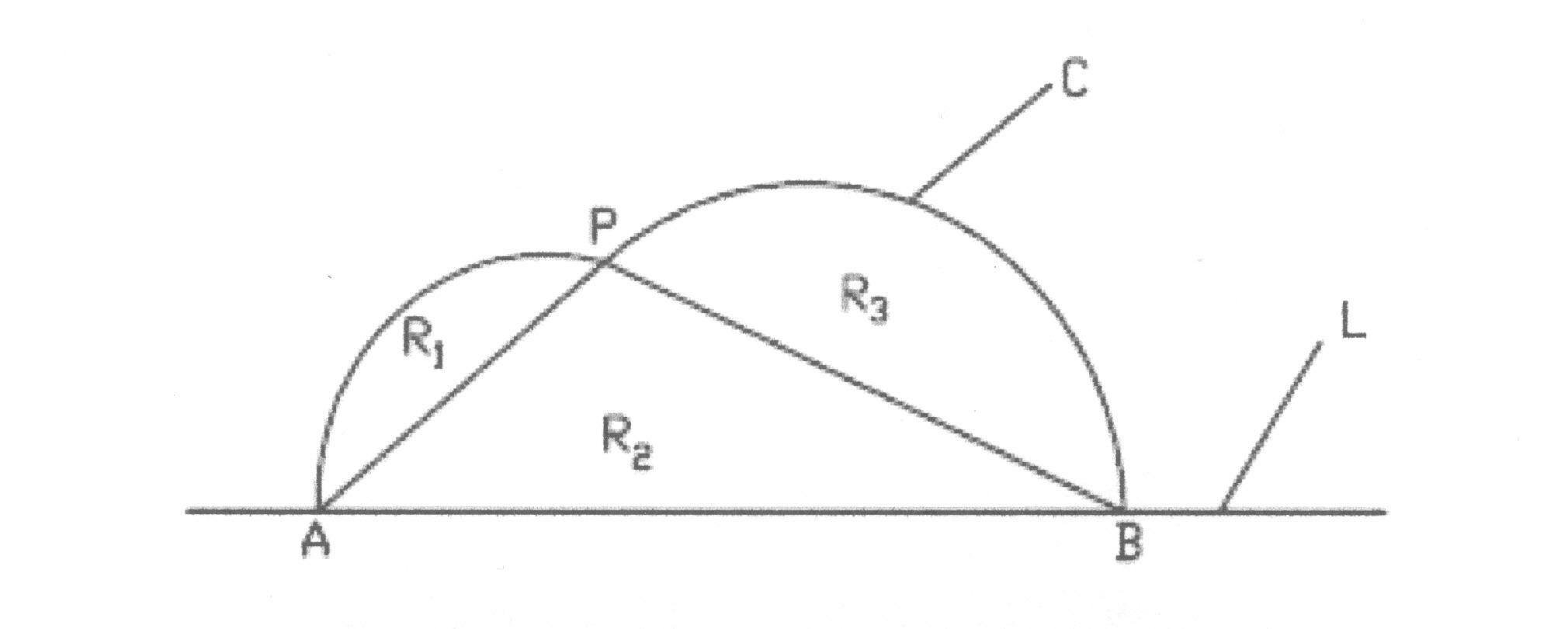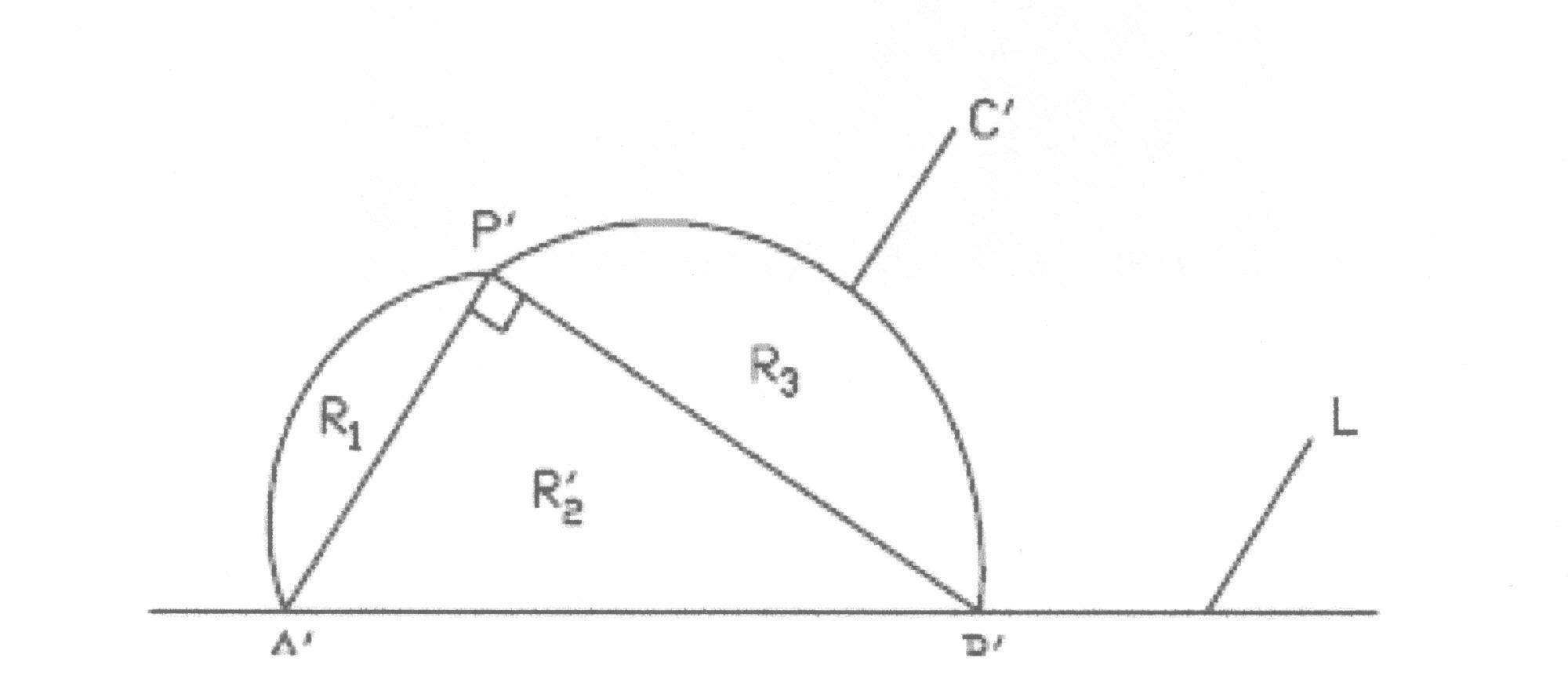- About MAA
- Membership
- MAA Publications
- Periodicals
- Blogs
- MAA Book Series
- MAA Press (an imprint of the AMS)
- MAA Notes
- MAA Reviews
- Mathematical Communication
- Information for Libraries
- Author Resources
- Advertise with MAA
- Meetings
- Competitions
- Programs
- Communities
- MAA Sections
- SIGMAA
- MAA Connect
- Students
- MAA Awards
- Awards Booklets
- Writing Awards
- Teaching Awards
- Service Awards
- Research Awards
- Lecture Awards
- Putnam Competition Individual and Team Winners
- D. E. Shaw Group AMC 8 Awards & Certificates
- Maryam Mirzakhani AMC 10 A Awards & Certificates
- Two Sigma AMC 10 B Awards & Certificates
- Jane Street AMC 12 A Awards & Certificates
- Akamai AMC 12 B Awards & Certificates
- High School Teachers
- News
You are here
The Sagacity of Circles: A History of the Isoperimetric Problem - The Work of Jakob Steiner
Just as the problem of isoperimetry is associated with the work of Zenodorus and his commentator Pappus in the ancient world, it was the Swiss mathematician Jakob Steiner (1796–1863) who tackled the isoperimetric theorem in the modern world. Indeed, the problem of isoperimetry in the nineteenth century emerged at an important juncture in mathematical thought. Mathematicians working in all fields of inquiry struggled over the use of analytic (i.e. calculus) or synthetic (i.e. pure geometry) methods in solving problems [“Isoperimetric”, 1]. Although mathematicians have since identified flaws in the synthetic approach to the isoperimetric theorem, it is Steiner’s 1842 geometrical proof which remains, as Nahin observes, a “model of mathematical ingenuity” [Nahin, 55]. It is important to note that Steiner’s proof of the isoperimetric theorem relied upon the duality (or logical equivalency) of the following statements:
A. Of all closed curves in a plane with equal perimeters, the circle bounds the largest area
[and]
B. Of all closed curves in a plane with equal areas, the circle has the smallest perimeter.
This can be shown as follows: If A is true and B is false, then for a given circle C there exists a figure F with the same area but with a perimeter shorter than that of C. If C is then made into a smaller circle C' whose perimeter is equal to that of the figure F, then the area of C' will clearly be smaller than that of C and, consequently, it will be smaller than the area of F. It is here that the contradiction arises. According to the above statement, C' and F have equal perimeters, thus resulting in the area of C' being less than that of F. By the original statement A, however, the area of the circle C' must be greater than that of F. Thus A implies B. A similar proof follows for the converse implication. [“Isoperimetric”, 1].
With the logical equivalency of A and B duly established, Steiner then proceeded to the geometric proof of Dido’s problem. He based his methods on two preliminary lemmas – first, that “any triangle inscribed in a circle, with a diameter as a side (the hypotenuse), is a right triangle”; and second, that “of all possible triangles with two sides of given length, the triangle of maximum area is the right triangle with the given sides as the perpendicular sides” [Nahin, 56]. With these two lemmas in place, Steiner then moved to an actual construction. As Nahin summarizes, “Let A and B be the two points on a given straight line L…and suppose the solution curve C is not a semicircle” (see Fig. 6) [Nahin, 57]. One can therefore conclude that there exists a point P contained on the line C such that ∠ APB ≠ 90° [Nahin, 57]. The area enclosed by the line L and the curve C is divided into three regions R1, R2, and R3 by the lines AP and PB.

Figure 6. “Steiner’s isoperimetric argument, part 1” from [Nahin, 57]
If the lines AP and PB are fixed at the point P and able to “slide” along the line L, one then moves A or B (or both) to A' and B' such that ∠A'P'B' = 90°, where P' is adjusted such that the length of A'P' is equal to that of AP and the length of P'B' is equal to that of PB (see Fig. 7) [Nahin, 57].

Figure 7. “Steiner’s isoperimetric argument, part 2” from [Nahin, 58]
The areas of the regions R1, R2, and R3 under the new curve then transfer as R1, R2', and R3 (R1 and R3 remaining unchanged because of the construction AP = A'P' and PB = P'B') [Nahin, 58]. By the preliminary lemma, the area of R2' is larger than that of R2, thus demonstrating the fact that “an arbitrary curve C [has been transformed] into a curve C' with the same perimeter that encloses (with L) an area greater than that enclosed by C and L” [Nahin, 58]. Accordingly Steiner concluded that “the only curve C that does not allow such an area-increasing, perimeter-preserving transformation is the semicircle” in which, by the preliminary lemma, there does not exist a point P contained on C such that ∠ APB ≠ 90° [Nahin, 58].
Steiner thus believed he had proved the circle to be the solution to the isoperimetric problem. As later scholars, including the German mathematician Peter Dirichlet (1805-1859), noted, Steiner had made an underlying assumption not explicitly addressed in his proof, namely that a solution exists [Nahin, 59]. The lemmas and final proof can only function if it is assumed (or known) that the isoperimetric problem is indeed solvable. As Nahin notes, this is not quite as obvious as it might first appear. Numerous geometrical problems, including the problem of “finding that convex figure of greatest area among all convex figures with a perimeter less than one” and the so-called Kakeya problem (finding “the smallest area in which a line segment of unit length can be rotated through 360°”) are, in fact, without solution [Nahin, 59-60].
Jennifer Wiegert, "The Sagacity of Circles: A History of the Isoperimetric Problem - The Work of Jakob Steiner," Convergence (July 2010)




